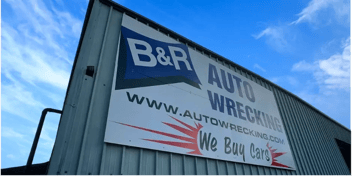As credit markets tighten and the cost of capital rises, the need for liquidity has continued to grow in the M&A world. The sale leaseback can be utilized as a source of acquisition financing to unlock capital tied up in real estate while retaining the operational benefits of the property. This article will provide a high-level overview of the sale leaseback process for potential acquirers, shedding light on its benefits and considerations while illustrating the need for an experienced advisor who will work on the acquirer’s behalf to maximize the economic terms and execution certainty of the sale leaseback.
What is a Sale Leaseback?
A sale leaseback is a financial transaction in which a property owner sells their property to an investor and simultaneously leases it back from the new owner. Essentially, the property owner becomes a tenant while occupying and operating the property. In an M&A deal, the acquirer can sell the real estate of the target simultaneously with their acquisition of the operating business and use the proceeds directly as part of their capital stack.
Key Benefits for Acquirers:
- Accretive Acquisition Financing: The most prominent benefit of a sale leaseback is the immediate injection of capital. By converting real estate equity into cash, you will generate liquidity while reducing your required equity check for your acquisition, maximizing the return on invested capital for your investors.
- Provide Holistic Liquidity Solution for Seller: Sellers generally look to make a clean break when selling their business. Typically, this will include selling off their owned real estate in addition to the operating company. Oftentimes the real estate value can be significant, and therefore having a solution for both the real estate component and the operating business can make you stand out in a competitive bidding process.
- Operational Control: Businesses who execute a sale leaseback still maintain operational control of the property through a long-term lease agreement, allowing the company to continue using the property the same way as before, without disruption. This is particularly valuable for businesses operating out of specialized locations.
- Deal Size: To ensure execution certainty in a tight timeline, the real estate sale leaseback valuation should be at a minimum value $5 million, and the business should generate at least $1 million in EBITDA. Size is an important factor as this determines whether institutional investors will be in the buyer mix, as these investors can process and coordinate transactions in a tighter and more efficient timeline, able to accommodate a simultaneous M&A process.
- Lease Terms: The lease terms, including duration, rental rate, and responsibilities, should be carefully negotiated to ensure they align with the acquirer’s long-term goals. It is best to always work with an advisor to ensure the business’s and the sponsor’s goals are met.
- Rental Payments: The acquirer must budget for lease payments, which will affect the business’s cash flow generation. It’s important to assess whether the rental obligations are sustainable for the business and to set rents accordingly.
- Due Diligence: We always advise that business owners or acquirers get a head start on property level due diligence so that we don’t face any surprises when we market the sale leaseback to real estate investors. The key property diligence workstreams are environmental, surveys, title, and property condition reports.
- Legal and Tax Implications: Consult with legal and tax professionals to navigate the complexities of sale leaseback transactions. Structuring the deal correctly is crucial to realizing the intended benefits both in terms of tax and accounting treatment.
By partnering with Ascension Advisory, you will work hand in hand with the leading commercial real estate advisory firm specializing only in sale leaseback transactions. Our team understands these nuances and works proactively to ensure the acquirer maintains maximum control of the process by staying ahead of key transaction elements, down to specific language in the lease and PSA that other less experienced or specialized groups might not consider.
Timeline:
You may be wondering about the timeline required for a sale leaseback transaction. While it can vary from as little as 30 days for a quick-turnaround, off-market institutional sale leaseback, the average transaction is about 70 to 80 days. If you are contemplating using a sale leaseback for acquisition financing, bringing in a trusted advisor as soon as possible is highly recommended, as they will be able to gauge if there is sufficient time to bring in an investor to meet your timeline. The chart below provides an illustration of this process:
Conclusion:
Sale leaseback transactions offer a strategic financial option for acquirers seeking to unlock capital from their target’s real estate assets while maintaining operational control of their facilities. By carefully considering the benefits and considerations outlined above and working with experienced professionals, sponsors can make informed decisions that align with their business objectives and financial goals.
If you are considering a sale leaseback to finance your M&A deals, reach out to the Ascension Advisory team for a quick and accurate read on how a sale leaseback could be a fit.
Let’s Talk






Leave a Comment